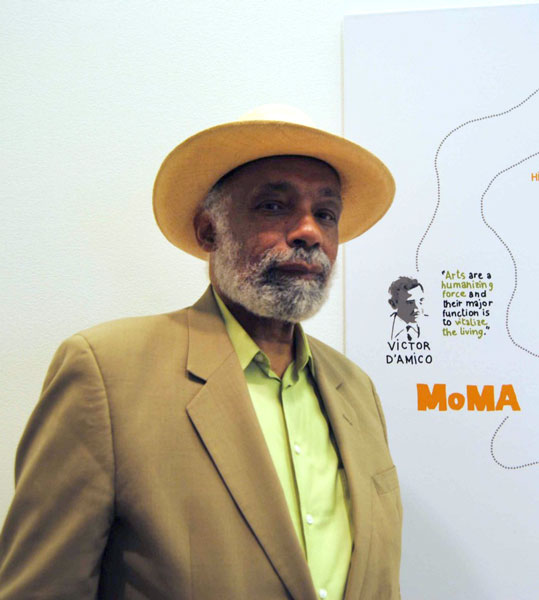
Marvin Brown
- 1981
- Silk Screen
- Image/sheet: 22 x 30"
- 40 prints in this edition
About the Print
Marvin Brown is an abstract and minimalist artist. Brown creates compositions by using a limited color palette and geometric shapes.
—From Brandywine Workshop and Archives records
About the Artist
Abstract and minimalist artist Marvin Brown was born in Queens, New York City. He earned his diploma from the École des Beaux Arts, Paris.
Brown taught for many years in the Department of Art and Visual Studies at Brown University, Providence, RI. He lives and works on Long Island’s North Shore. As a Fulbright Senior Scholar in the Fine Arts, he was an artist-in-residence at Victorian College of the Arts at the University of Melbourne, Australia, and has taught and traveled extensively.
His work can be found in the collections of the New York Public Library; Slobodkina Foundation in Glen Head, NY; Virginia Museum of Art, Richmond; Fogg Museum of Art at Harvard Art Museums, Cambridge, MA; Center for Innovative Printing at Rutgers University, New Brunswick, NJ; New Jersey State Museum, Trenton; and Princeton University Libraries, NJ.
—From Brandywine Workshop and Archives records
Curriculum Connections
Suggested Topics for Algebra I and Geometry
Algebra I:
The resources provided can be used early on in an Algebra class to help students think in multiple dimen- sions. The artworks can be used to demonstrate illusions intended as a design element or to help students imagine space constructed or deconstructed from forms or shapes within a space. The ability to visualize concepts through art can make advanced math more accessible to students early on.
Geometry:
Some may want to use images in the Artura.org library to explore more complex uses of advanced math to create the illusions of space and solve spatial dynamic issues for three-dimensional works such as stand-alone sculpture and site-specific, public artworks. The laying of bricks or ceramic tiles is a skilled craft that can involve creativity and innovation in bricks or tiles are set and many available options in color, design, and texture are used. Sculptors such as Melvin Edwards, Richard Hunt, and John T. Scott have consistently used higher math concepts in the creation of large scale, space-defining public art.
Questions to Consider
- What are the different considerations between symmetry and asymmetry in relation to designing a structure or composing a work of art?
- What roles can rhythm, repetition, pattern, proportion, and scale play in an architect’s design and construction process? What roles can they plan in making a work of art?
- Other than the design of buildings, where else does one observe the use of the right angle in a creative way and for what purposes?
